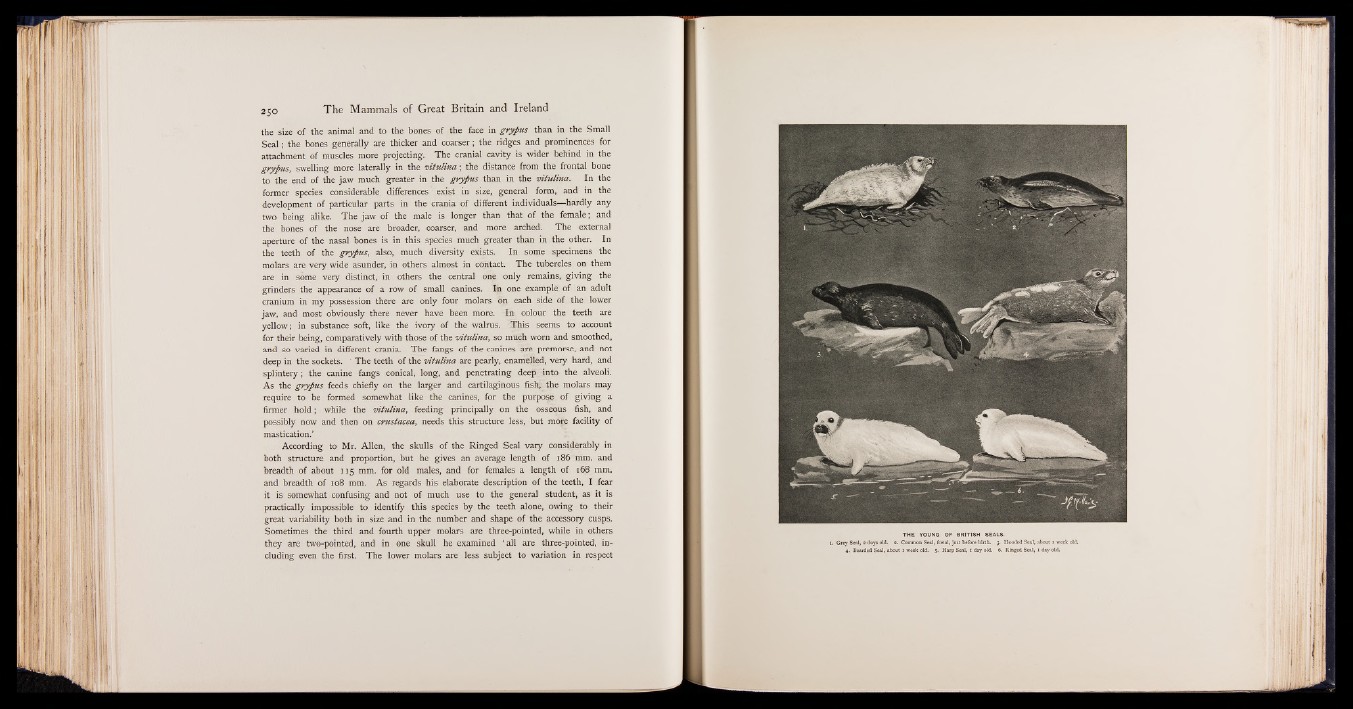
the size of the animal and to the bones of the face in grypus than in the Small
Seal; the bones generally are thicker and coarser; the ridges and prominences for
attachment of muscles more projecting. The cranial cavity is wider behind in the
grypus, swelling more laterally in the v itu lin a ; the distance from the frontal bone
to the end of the jaw much greater in the grypus than in the v itu lin a . In the
former species considerable differences exist in size, general form, and in the
development of particular parts in the crania of different individuals— hardly any
two being alike. The jaw of the male is longer than that of the female; and
the bones of the nose are broader, coarser, and more arched. The external
aperture of the nasal bones is in this species much greater than in the other. In
the teeth of the grypus, also, much diversity exists. In some specimens the
molars are very wide asunder, in others almost in contact. The tubercles on them
are in some very distinct, in others the central one only remains,; giving the
grinders the appearance of a row of small canines. In one example of an adult
cranium in my possession there are only four molars bn each side of the lower
jaw, and most obviously there never have been more. In colour the teeth are
yellow; in substance soft, like the ivory of the walrus. This seems to account
for their being, comparatively with those of the v itu lin a , so much worn and smoothed,
and so varied in different crania. The fangs of the canines are premorse, and hot
deep in the sockets. The teeth of the v itu lin a are pearly, enamelled, very hard, and
splintery; the canine fangs conical, long, and penetrating deep into the alveoli.
As the grypus feeds chiefly on the larger and cartilaginous fish; the molars may
require to be formed somewhat like the canines, for the purpose of giving a
firmer hold; while the v itu lin a , feeding principally on the osseous fish, and
possibly now and then on Crustacea, needs this structure less, but mor;e facility of
mastication.’
According to Mr. Allen, the skulls of the Ringed Seal vary considerably in
both structure and proportion, but he gives an average length of 186 mm. and
breadth of about 115 mm. for old males, and for females a length of 168 mm.
and breadth of 108 mm. As regards his elaborate description of the teeth, I fear
it is somewhat confusing and not of much use to the general student, as it is
practically impossible to identify this species by the teeth alone, owing to their
great variability both in size and in the number and shape of the accessory cusps.
Sometimes the third and fourth upper molars are three-pointed, while in others
they are two-pointed, and in one skull he examined ‘ all are three-pointed, including
even the first. The lower molars are less subject to variation in respect